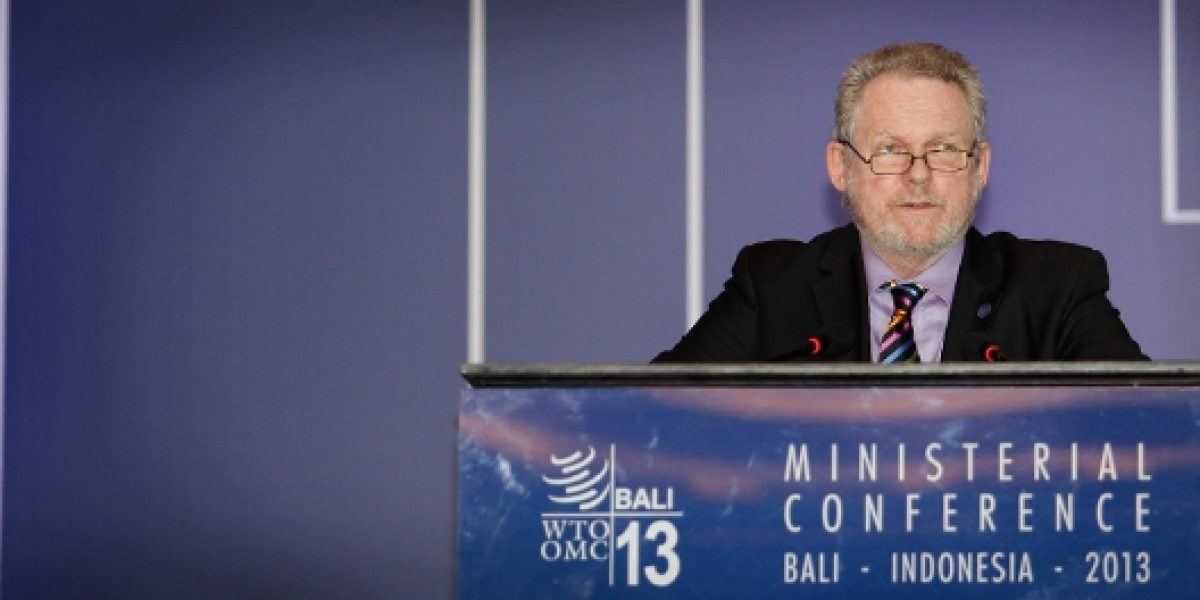While Bali delivered agreements on a ‘package’ for least developed countries (LDCs), food security, and trade facilitation, it remains to be seen whether it will generate sufficient momentum to resuscitate the other, more critical components of the Doha Round particularly the negotiations in agriculture and industrial goods. Given these difficulties the major trading nations are pursuing their trade interests more actively outside of the WTO, particularly through bilateral and regional preferential trade agreements (PTAs).
Of particular significance are the ‘mega-regionals’: the Trans Pacific Partnership (TPP), notably excluding China, and the Transatlantic Trade and Investment Partnership (TTIP), both led by the U.S. They are wide in scope and deep in ambition, with substantial ramifications for the WTO and non-party states should they successfully conclude. They will establish new global norms and regulations that may find their way back into the WTO at some point in the future, and also into reciprocal PTAs with non-parties. Those rules include, for example, disciplines on: state-owned enterprises, competition policy, investment, intellectual property, environment, and labour. This much debated ‘trade and…’ agenda has been actively resisted at the WTO by developing countries.
This move to expand the global trade rules framework is also driven by a desire to address the regulatory needs of multinational corporations operating global value chains (GVCs). Many analysts agree that the emergence of GVCs necessitate changes to trade regulations. Since the WTO has manifestly failed to deliver such rules, mega-regionals aim to fill the gaps. However, mega-regionals could undermine the WTO’s centrality in international trade governance. Furthermore, competing initiatives are underway, notably the Regional Co-operation in Asia and the Pacific (RCEP) negotiations that include China but not the U.S. This development holds the potential for a multi-bloc trade world to be established outside the confines of the WTO, at a time of heightened international tensions.
The BRICS do not seem to have discussed these mega-regionals.
Furthermore, while South African public figures speak of a general BRICS resistance to ‘anti-developmental’ and ‘anti-multilateral’ proposals by developed countries in the WTO, the BRICS mortar is fragile. For example, South Africa and some of its BRICS partners have generally defaulted to a blocking option as a strategy of engagement in the WTO, especially with reference to the use of plurilaterals, or small group negotiations, to unblock the Doha impasse. Yet China has expressed interest in joining the Trade in Services Agreement (TISA) negotiations, a plurilateral taking place in Geneva outside the Doha round.
Furthermore, China’s domestic economic reform debate increasingly encompasses the notion of joining the TPP negotiations in order to buttress those reforms, in a manner analogous to China’s accession to the WTO in 2001. And stakeholders in Brazil and India are actively discussing how their countries should respond if the mega-regional negotiations are successful. That debate is notably absent from the South African stage.
In light of these strategic realignments it is important for SA to reassess its trade strategy choices and policies. The incoming government should assume a successful outcome to the mega-regional negotiations and implement appropriate, proactive policy responses. SA could use the mega-regional process to lock in key domestic reforms and establish new disciplines on ‘behind the border’ issues with a view to making the country more attractive to GVC investments. This would also counter investment deflection, particularly to those developing countries that are negotiating the mega-regionals. However, recent policy developments, particularly in areas related to foreign investment attraction, raise concerns that SA could renege on some its trade related commitments, thus exacerbating the investment-deflection scenario.
At a regional level, South Africa is involved with the negotiations towards a Tripartite Free Trade Area comprised of the Southern African Development Community (SADC), the East African Community (EAC) and the Common Market for Eastern and Southern Africa (COMESA). These negotiations could be used as a platform to experiment with the negotiation of the new regulatory agenda. Movement in this direction would strengthen SA’s position as the economic ‘gateway’ to Southern Africa, and hold out the prospect for attracting GVC investments oriented towards the region. At the very least, these regional blocs could negotiate regional policies on these new ‘behind the border’ issues rather than having to engage with the issues only when they are raised by developed country negotiating partners.
The WTO still remains an important institution for global trade regulation as well as the preservation of the interests of smaller countries. SA’s agenda of multilateralism, transparency and inclusiveness becomes relevant in the context of bringing the trading majors back to the negotiating table at the WTO. This could mean streamlining the Doha negotiating agenda, if not doing away with it completely and then bringing the issues being negotiated in the mega-regionals under the fold of the WTO. Only in the WTO can countervailing coalitions be forged to temper the potential for regulatory excess that may arise through the mega-regionals.
This brings to the fore the important question whether plurilaterals could be used to promote the establishment of new rules. Rather than maintaining an oppositionist stance, notwithstanding its merits, SA and its BRICS partners should proactively engage with the WTO membership by proposing their own plurilateral initiatives, for example on agriculture.
Within this, the new special and differential treatment provisions for developing and developed countries as espoused in the Trade Facilitation Agreement, which essentially bind all countries to implement the agreement provided developing countries and LDCs are provided with technical capacity and financial assistance for implementation, should be actively explored.
It is clear from the above that current developments in the WTO and in other trading spheres demand that South Africa start recalibrating its trade strategies in preparation for an evolving global trading environment. If not done, South Africa risks isolation, particularly from the other major developing countries who currently serve as its allies in the WTO.








